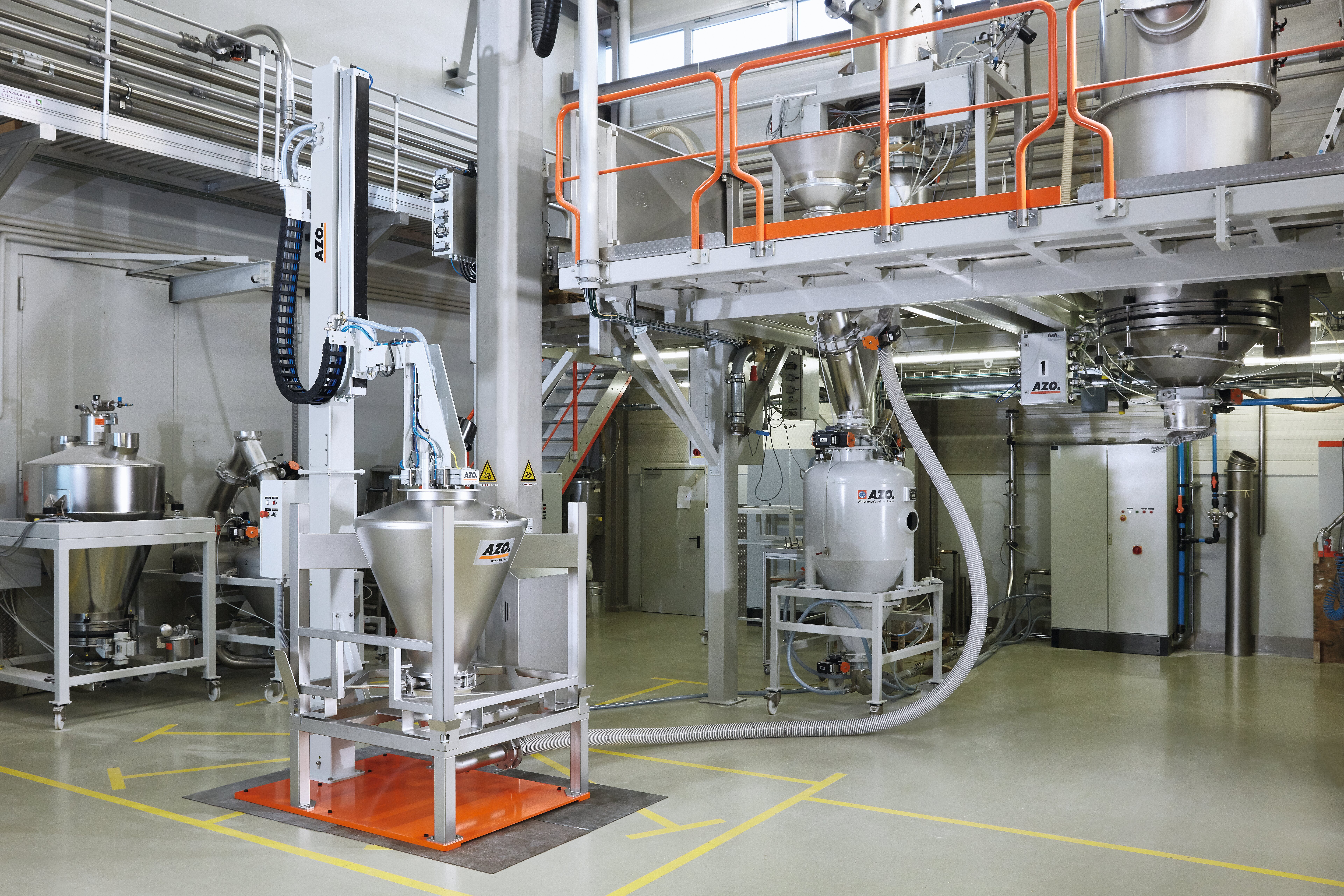
For cleaning the inside of rotation-symmetrical containers and hoppers with compressed air. Used wherever dry cleaning is sufficient or wet cleaning is not possible. The ingenious design makes it possible to automatically remove product residue and clean the inside of containers. Thanks to the folding mechanism, it is also possible to clean containers with small inlet apertures, as the cleaning unit only unfolds once it is inside the container.
The cleaning unit, which is moved vertically by means of a linear drive, is attached to a vertical column with a cantilever arm. The cleaning unit consists of two arms on which the cleaning nozzles are attached. These arms are folded together tightly as the cleaning unit is inserted into the container and they do not open out until fully inserted in the container. Once unfolded close to the walls, the unit is rotated during the cleaning cycle by a pneumatic rotary drive. This enables it to reach all corners on the inside of the container and to clean them with compressed air. The nozzles have a central supply of cleaning air that runs in a flexible energy supply chain.
The container equipped with an outlet valve is placed in the cleaning station. Centring corners make it easier to position the container. The patented docking collar creates a dust-tight connection between the container outlet and the suction hopper. An aspiration line from a central filter station is connected to the suction hopper. The product residue that are removed during the cleaning process are drawn off and disposed of in a central system.
The container to be cleaned is placed in the cleaning station. The linear drive with the attached cleaning unit is in the upper end position and the rotary drive is in the starting position. The cleaning air supply and extractor are switched off. The container can be positioned manually using a fork-lift truck or moved into the station using a roller or chain conveyor. It is possible to implement various levels of automation. The container outlet is connected to the docking collar on the suction hopper either by lowering the container or by raising the suction hopper, depending on the design.
Various levels of automation are also available for opening the container cover. Once the container outlet valve is open, the cleaning unit is moved into the container to the lower end position. The following sequences run automatically in accordance with the specified parameters. Once the cleaning unit has been inserted into the container, the arms with the cleaning nozzles unfold and the aspiration is switched on. When planning the system, it is important to ensure that the air volume for aspiration is greater than the volume of compressed air for cleaning.
The slight negative pressure in the container helps to reliably prevent dust from escaping.
A rotary drives rotates the cleaning unit when the cleaning air is turned on. Product residue adhered to the container are blown off from the walls and sucked downwards into the central filter. The length of the cleaning cycle can be varied depending on the level of soiling.
At the end of the cleaning operation, the air supply to the cleaning nozzles is shut off and the arms are folded together.
The cleaning unit can now be moved out of the container and aspiration stopped. The machine operator closes the container outlet valve and locks the container cover in place to then move the container out of the station. The clean container can now be immediately returned back to production.